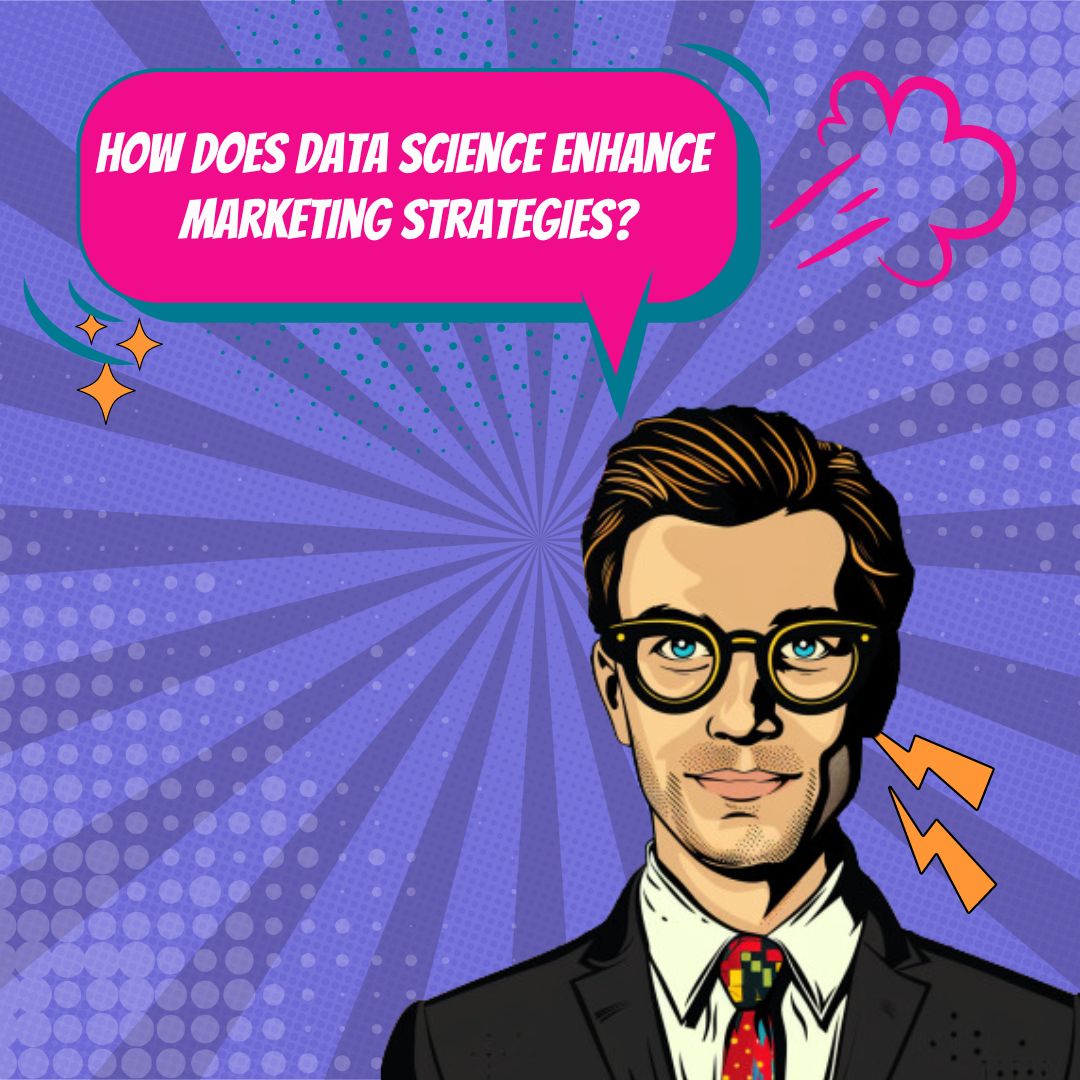Key Takeaways
✅ Data Collection and Organization: Ever been overwhelmed by a messy desk? Imagine that, but with data. Companies start by tidying up loads of numbers, figuring out what's useful, and ditching what's not. This step's like prep work for a masterful dish – everything needs to be chopped and ready for the cooking part, which, in our case, is analysis.
✅ Analytical Methodologies and Tools: Now for the cooking – companies mix and match different analytical flavors (methods and tools) until they find the perfect recipe for insight. Just like in cooking, the right combination can mean the difference between a bland meal and a gourmet feast, with results that guide a company to smarter choices.
✅ Actionable Insights and Decision Making: Finally, it's time to eat, or rather, act on those tasty insights. Companies take all that data-turned-information and make choices that could change the game for them – optimizing operations, enhancing customer experience, or finding that secret sauce for extra revenue.

Introduction
Data analysis is more than just number crunching; it's a pivotal element that can crown kings in the business world. Why? Because it equips companies with the power to turn uncertainty into strategy, chaos into clarity, and challenges into opportunities. This guide is your navigator through the intricate maze of data analysis, pointing out the shortcuts to improved decision-making, and giving you the treasure map to find that hidden chest of business intelligence gold.
Ready to see how you can turn numbers into narratives that propel your company forward? Stick with us as we embark on this journey, revealing methods that could be your secret weapon in the relentless quest for business glory. Trust me, by the end of this adventure, you'll be digging into your data with the excitement of a prospector striking gold – and you might just strike it too!
Top Statistics
| Statistic | Insight |
|---|---|
| Global Data Analytics Market Size (2021): Valued at $57.04 billion in 2020 and projected to reach $368.93 billion by 2028. (Source: Fortune Business Insights) | This growth signifies a massive opportunity for businesses to harness data as a driving force for informed decision-making. |
| Adoption Rate of Data Analysis Tools (2021): 99% of executives report investments in data-driven cultures. (Source: NewVantage Partners) | Nearly all high-level managers understand the critical impact that a data-centric approach has on their company's success. |
| Increase in Demand for Data Analysts (2021): Projected employment growth of 31% from 2019 to 2029. (Source: U.S. Bureau of Labor Statistics) | Rapid expansion in this workforce indicates companies need more experts to interpret complex data and drive insights. |
| Importance of Real-time Data Analysis (2021): 70% of businesses believe real-time analysis is critical to success. (Source: IBM) | Real-time data provides a powerful tool for businesses to immediately respond to customer trends and market changes. |
| Emergence of Artificial Intelligence in Data Analysis (2021): 91.5% of enterprises invest in AI for enhancing data analysis. (Source: Forbes) | AI's role in data analysis is becoming increasingly crucial, enabling more efficient and accurate decision-making processes. |
The Treasure Hunt of Data Gathering
Ever ponder on how businesses collect the massive amounts of information they use every day? Picture a giant digital treasure hunt where each piece of data is a gold coin. Companies scavenge for these coins everywhere – from customer surveys to sales reports, even the chatty feedback on social media. But the trick isn’t just to compile a dragon's hoard of data. It’s about being organized. Think of it this way: if your data were clothes, how quickly could you find that one lucky shirt if your drawers were a mess? Keeping your data clean and well-sorted is essential, or you’ll drown in the clutter, unable to spot the gems that could help your business shine.
Mapping Out Your Data Expedition
Got a pile of data? Take a moment before you dive in. Ask yourself, "What's the end goal here?" Imagine setting off on a journey – you wouldn't start wandering without a destination in mind. Before analyzing, you must define what business issues you're tackling or opportunities you're chasing. Think about the questions that will lead you to your goal and ensure they're focused and measurable. This way, you’re plotting a course with purpose, ready to follow the data wherever that may lead.
Culinary Arts Meets Data Analytics
When it comes to turning raw data into valuable insights, think like a chef in a well-stocked kitchen. Your analytical methods and tools are your recipes and utensils. Whether it's a simple pie chart or a complex predictive algorithm, these resources help you cook up the insights that can change how you do business. The goal is to transform that raw, unappetizing data into a feast of actionable insights, ready to serve up strategic decisions that could change the game for your business.

The Data Detective Goes to Work
Ready to get your hands dirty with conducting data analysis? Imagine you're exploring a vibrant new city, soaking in the sights and sounds, learning as you go. Data analysis is much like that; it's about discovering patterns, pinpointing anomalies, and gaining a deep understanding of the lay of the land. This phase is where you test your hypotheses, construct models, and ensure they hold up so you can confidently base your business decisions on them. It’s the nitty-gritty work that separates the novices from the experts.
Turning Insights into Strategy
Discovering insights and not using them is like finding a treasure map and never going hunting. Once you’ve unearthed those insights, it’s time to set them in motion. Implementing findings into your business’ strategy can be revolutionary, but it's crucial to track how these changes perform. This isn't about a temporary spike in success; it's about creating a sustainable groove of improvement and letting the data guide you to continual growth.
Navigating Through Data Analysis Pitfalls
Anticipating challenges in data analysis is essential – think of it as preparing for potential storms on your voyage. From inaccurate data sets to concerns around privacy, issues can and will arise. That's without mentioning the need for skilled navigators who can wield a spreadsheet like a captain steering a ship. To sail smoothly through these troubled waters, it calls for teamwork, clear guidelines for data handling, and a consistent appetite for learning and innovation within your organization. Getting this balance right is crucial for successful data-driven journeys.
By recognizing the importance of organization, clarity of purpose, the right analytical tools, and diligent implementation, businesses can transform their approach and ensure their voyage through the data-driven world leads to treasures of success. Remember, in the world of data, it’s the story you draw from the numbers that charts the course to your business’s future.

AI Marketing Engineers Recommendation
Recommendation 1: Prioritize Data Quality Over Quantity: You've heard the saying, "Quality over quantity," right? It holds true even when we plunge into the world of data. Before you even think of diving deep, make sure the data you collect is clean and reliable. Scrub out the duplicates, fix the inconsistencies, and validate the data sets. Ain't nobody got time for data that leads to misguided decisions. Use powerful data management tools and apply robust validation rules. Remember, gold nuggets of insights come from the purest of mines.
Recommendation 2: Harness the Storytelling Power of Data Visualization: There's a story in your numbers waiting to be told. By using data visualization tools, you can translate complex data into a narrative that helps you catch the drift at a glance. Not only does this empower you to make informed decisions quickly, but it also enables teams across your company to understand and engage with the data. Staying on top of the game means being able to tell a tale that convinces, converts, and compels action. Use dashboards and infographics to transform static data into a story that will have everyone from the intern to the CEO on the edge of their seats.
Recommendation 3: Adopt a Culture of Data-driven Decision Making: Let's get down to brass tacks. Making decisions based on gut feelings is like trying to hit a piñata blindfolded – you might strike it lucky, but there's a good chance you'll miss. It's time to get everyone on board the data train. This means training your team to understand and utilize data, ensuring accessibility at all levels, and establishing clear protocols for data-based strategies. Don't forget to celebrate when data-driven decisions lead to wins, big or small. It's about creating a vibe where data is the DJ, and every department is rocking out to its beats.

Conclusion
So, we've chatted quite a bit about data analysis and its big role in businesses, haven't we? We've navigated through the thicket of collecting and sorting out heaps of information, dancing around numbers like they're partners at a ball. We've seen this isn't just busywork; it's a treasure hunt for insights that can steer a company toward smoother seas.
Yeah, we've also had a heart-to-heart about the hurdles. Let's be honest—getting lost in details or tripping over the not-so-small rock of data quality issues can happen to the best of us. But, overcoming these challenges, isn't that part of the appeal? When the perfect patch of data leads to an aha! moment, it's like finding a hidden path on a well-trod trail.
Have you ever thought about questions like what keeps our favorite shops stocked with the goods we love, or how companies seem to read our minds with products? Well, that's the magic of data analysis—the secret ingredient in the recipe for growth and innovation. It's a dance of numbers and facts led by a tune of sharp analysis and thoughtful questioning.
And what happens next is key. Once the dodge and weave of crunching numbers is done, the real work begins. Implementing these discoveries, making sure they're not just dust collectors on a virtual shelf—that's where the true adventure begins. It sparks changes, new strategies, and even shifts in a company culture. It's about knowing where to go and the best way to get there.
As we wrap up, think about this: Could data analysis be the compass guiding your business into uncharted territory? Are you ready to crunch, interpret, and act on the data whispering secrets about your next big move? Remember, data analysis isn't just a task; it's your ticket to a world of opportunity. It's out there, waiting—will you grab it?

FAQs
Question 1: What is data analysis in companies?
Answer: Data analysis refers to the process of collecting, cleaning, transforming, modeling, and interpreting data to discover useful information that supports decision-making within organizations.
Question 2: Why is data analysis important for businesses?
Answer: Data analysis helps businesses make informed decisions based on facts rather than assumptions. It enables them to optimize processes, improve customer experiences, increase profitability, and stay ahead of competitors.
Question 3: What types of data do companies analyze?
Answer: Companies typically analyze structured (e.g., sales records) and unstructured data (e.g., social media posts). They may also use both quantitative (numerical) and qualitative (descriptive) data sources.
Question 4: How does data collection work in companies?
Answer: Companies gather data through various methods like surveys, transactions, website analytics, sensors, and third-party providers. Collected data is then stored in databases, data warehouses, or cloud storage systems.
Question 5: What techniques are used in data analysis?
Answer: Common techniques include statistical analysis, machine learning algorithms, predictive modeling, data mining, text analytics, and visualization tools. These help extract patterns, trends, and insights from large datasets.
Question 6: Who performs data analysis in companies?
Answer: Data analysts, data scientists, business analysts, or other professionals with relevant skills and experience typically perform data analysis in companies. They work closely with stakeholders to understand the business context and identify valuable insights.
Question 7: What are some challenges of data analysis?
Answer: Common challenges include data quality issues (e.g., missing values), scalability problems when handling big data, privacy concerns, integrating multiple data sources, and communicating complex findings effectively to non-technical audiences.
Question 8: How can data analysis be used for decision-making?
Answer: Data analysis helps organizations make decisions based on evidence rather than intuition. It provides insights into customer behavior, market trends, operational efficiency, and potential risks, enabling informed strategic planning and resource allocation.
Question 9: Can data analysis improve customer experiences?
Answer: Yes, by analyzing customer feedback, purchase history, and engagement patterns, companies can personalize their offerings, optimize user interfaces, and enhance overall customer satisfaction.
Question 10: What tools do companies use for data analysis?
Answer: Companies often use specialized software like Excel, Tableau, R, Python, SQL, SAS, and various machine learning libraries for data cleaning, modeling, visualization, and reporting. Cloud platforms such as AWS, Azure, and Google Cloud also provide powerful analytics services.

Academic References
- Davenport, T. H. (2013). Data Analytics and Business Intelligence. Harvard Business Review. This article delves into how data analytics serves as a game-changer in business settings by empowering companies with the insight to navigate competitive landscapes more effectively. Davenport advocates for a corporate culture that not only appreciates the nuances of data analysis but also is willing to invest in the training and technology that can turn information into a powerful business ally.
- Davenport, T. (2014). Big Data at Work: Dispelling the Myths, Uncovering the Opportunities. HBR Press. This piece is a kind of playbook that lifts the veil on big data, replacing hype with practical examples of how tangible improvements can be wrung from massive amounts of data. Tom Davenport scatters the cloudy myths and highlights how real businesses are using data to refine customer experiences and reshape their strategies.
- Davenport, T. H., & Harris, J. G. (2007). Competing on Analytics: The New Science of Winning. Harvard Business School Publishing. Here's a book that introduced the world to 'Analytical Competitors'—organizations that have betting big on data analytics to forge ahead. This text is a treasure trove for anyone curious about how data is effectively used to decode customer behavior, market trends, or even optimize internal practices.
- Silver, N. (2012). The Signal and the Noise: Why So Many Predictions Fail – But Some Don’t. Penguin Books. Nate Silver's work is like a deep dive into the world of predictive modeling. Although it's not strictly business-oriented, the wisdom within is a goldmine for companies hoping to harness data analysis for forecasting and planning. This book is a must-read if you want to understand why some data-driven predictions can shine while others stumble.







